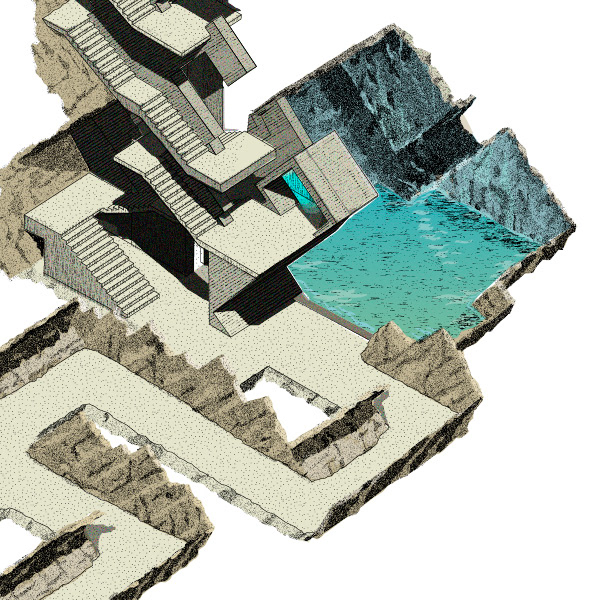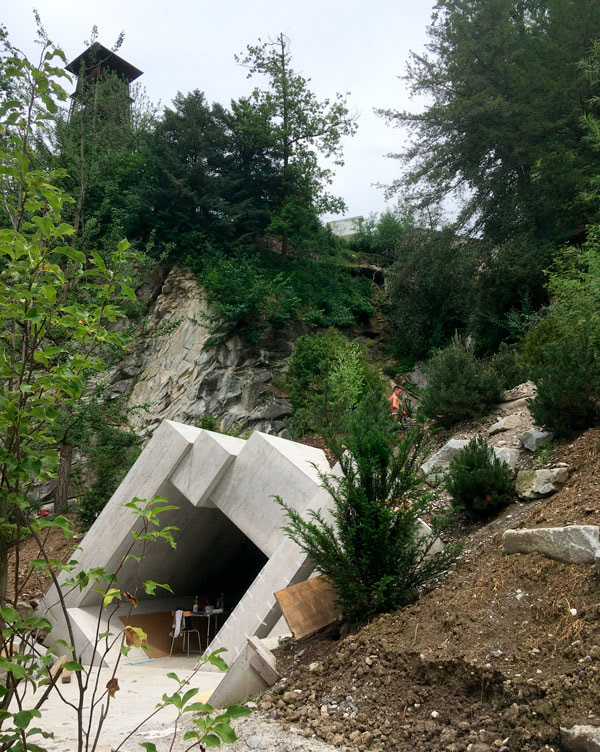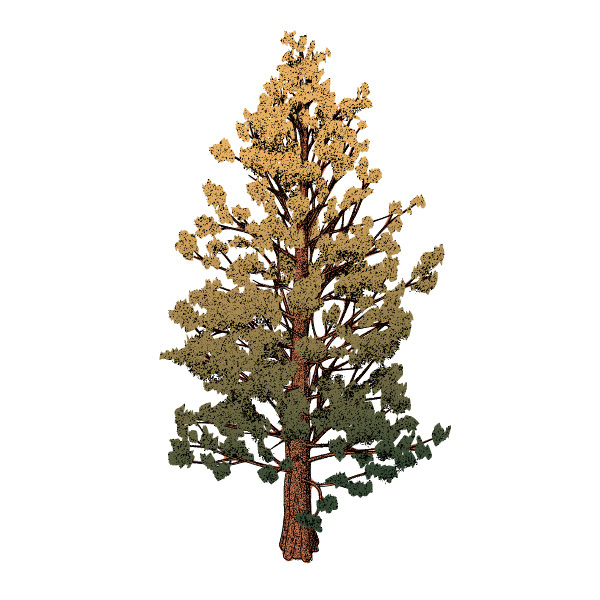




Vector based versatility
The map contains a number of complicated objects. I created all of them following the same process: Line art, colors and grey scale shadows are vector objects. Noise and other raster effects are applied dynamically. Having each object as a separate entity allowed great flexibility with the overall layout.
















Instant trees
New plants and garden spaces are an integral part of the overhaul and expansion of the Glacier Garden Museum's facilities. A detailed garden plan helped identify landmark trees. I then used a procedural tree generation software to recreate typical looks of grown up landmark trees like Seqoia, Ginko etc. The 3d-trees also served to generate a realistic shadow map and helped to keep a consistent perspective.











Photogrammetry
A photogrammetric capture helped understanding and drawing the oldest part of the museum that shows traces of glaciers carved and drilled into the bedrock.



A journey to the center of time
Many incremental steps and trials along the way were necessary to arrive at the final design. My favored version with blueish rock path and cosmic black spaces surrounding it unfortunately wasn't convincing enough.



Monsters
I was asked to test how animals of different periods of earth's history would fit into the design. The monsters didn't make it to the final design. Visitors still encounter them as part of intriguing animations that are projected onto rocky walls along the rock path, designed by TweakLab Basel




Personnel
A diverse crowd populates the illustration. They are composed of colored shapes and a shadow layer without line art. In the end I couldn't resist the temptation to include myself in the picture.


